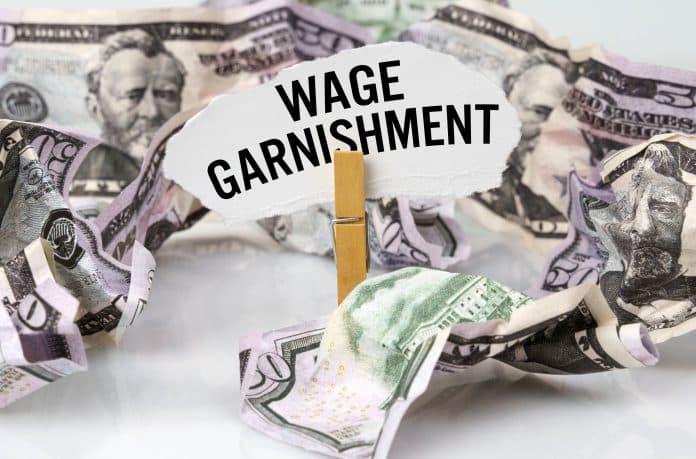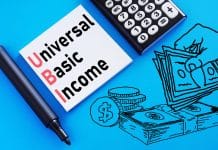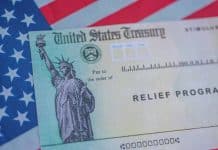
It can be very stressful dealing with wage garnishment. The process can even be confusing, especially if your wages come from self-employment. You may have some questions about wage garnishment while being self-employed. If that’s the case, hopefully this article can provide some useful information! Understanding self-employment wage garnishment can be easier than you realize.
Understanding Wage Garnishment
Before you can learn more about what it means to have your wages garnished if you are self-employed, you should first make sure you understand wage garnishment. Wage garnishment, as defined by the U.S. Department of Labor, is a legal procedure that will withhold a person’s earnings by their employer due to a court order. Some common examples of wage garnishment would include child support payments, student loans, consumer debts, etc. The withheld wages are then sent directly to the individual, creditor, or any other entity that is due the money. Your wages will continue to be garnished until the debt is repaid.
Most of the time, creditors will not be able to have your wages garnished until they have a money judgement against you. This judgement will be done through the courts! The creditor would need to sue you in court and either win the case or get a default judgement. Default judgements tend to happen if the sued party doesn’t respond. Once the creditor has that judgement, they will send your employer the documentation necessary for the wage garnishment.
Once your employer receives the documentation, the wage garnishment begins. They will take out the portion that is due from your paycheck. However, it is important to note that not all debts will need to go through the court system to garnish wages. Debts that wouldn’t necessarily go through the court system include:
- Tax debts
- Federal student loans
- Alimony
- Child Support
Can Self-Employment Wages be Garnished?
Plenty of people get confused when it comes to self-employment and wage garnishment. If you are an independent contractor or freelancer, your wages cannot be garnished. That’s because wages are technically defined as earnings that are paid to an employee by an employer. Regardless of whether or not your primary source of income comes from self-employment, you will still need to be responsible. Instead of a traditional wage garnishment, self-employed people would receive a non-earnings garnishment. Instead of garnishing personal earnings (like a wage), a non-earnings garnishment focuses on property.
Understanding the Difference Between Non-Earnings Garnishment and Wage Garnishment
It is important to understand this difference, especially if you are self-employed. There are some key differences to keep in mind that can help you better understand this difference:
- Wage garnishment is typically continuous so it would get taken out from each paycheck until the debt is fully repaid.
- Non-earnings garnishment is a one-time attachment of compensation that is given for services performed like receivables from a certain source, commissions, a contract payment, etc.
- Wage garnishment can garnish up to 100% of your expected compensation.
- Non-earnings garnishment can reach bank accounts and other property.
Another way that a judge may try to collect debts is through a till tap. This is when a sheriff would remove funds from a business cash register. They can also seize property.
Are There Limits for Wage Garnishments and Non-Earnings Garnishments?
Each state will have their own rules around garnishments. However, a person may see up to 100% of their expected compensation be garnished. Federal law states that no more than 25% of your disposable income can be garnished. However, state law may be different and can allow for more than that.
Is There a Way to Protect Yourself from Wage Garnishment?
If you get a wage garnishment order, you may have the chance to protect or exempt some (or all) of your wages. To pursue this option, you will want to file an exemption claim with the court. Besides an exemption claim, you could also choose to file for bankruptcy. However, filing for bankruptcy is a very serious decision and should not be made lightly! The amount of protection you may be able to have will vary by state. Every state has their own set of exemption laws that outline the amount of income you may be able to keep.
Understanding Exemption Claims
Many people don’t even realize that they may have some protection options to help them when dealing with wage garnishment. Every state has some sort of legislation in place to protect at least some of your property from a judgment against you. For example, in a majority of states, certain items cannot be taken to repay debt like:
- Clothing
- Furniture
- Personal effects
- Public benefits
However, the creditor may try to pursue other garnishments like a lien, levy, wage attachment, assignment order against property, etc.
Understanding Bankruptcy
This should be a last resort on your list! Filing for bankruptcy is not a decision that should be taken lightly. It comes with a variety of pros and cons (usually there are more cons for a person). There are different chapters of bankruptcy that can help with different situations. The three most popular types of bankruptcy chapters are a chapter 7 bankruptcy, chapter 11 bankruptcy, and chapter 13 bankruptcy.
Chapter 7 Bankruptcy
People that have a lot of unsecured debt tend to choose this bankruptcy option. Many Americans deal with unsecured debts like credit card debt, medical bills, etc. With this type of bankruptcy, people have the chance of having to liquidate their property to repay a part or all of the unsecured debt they owe.
Chapter 11 Bankruptcy
A chapter 11 bankruptcy is used by businesses. Basically, the goal of this bankruptcy is to help businesses reorganize their company to become profitable (all while staying open). Each plan for a business to become profitable will vary but generally it includes cutting costs and increasing revenue.
Chapter 13 Bankruptcy
Not everyone may be able to qualify for a chapter 7 bankruptcy. This is especially true for people who make too much money. However, those who make too much for a chapter 7 bankruptcy are still in luck. A chapter 13 bankruptcy is a great alternative. Also known as the wage earner’s plan, this bankruptcy creates workable debt repayment plans over a set period of time.
Bottom Line
If you get a wage garnishment order, you aren’t the first, and you definitely won’t be the last. Even if you are self-employed, you could still find yourself dealing with a garnishment even if it isn’t a traditional wage garnishment. You could find yourself dealing with a non-earnings garnishment or even other debt collection means. However, you may be able to protect yourself! You may be able to:
- File an exemption claim
- File for bankruptcy
You will want to check with your state to learn more about what protections you may have. You may find yourself having more or less options depending on where you live.


















